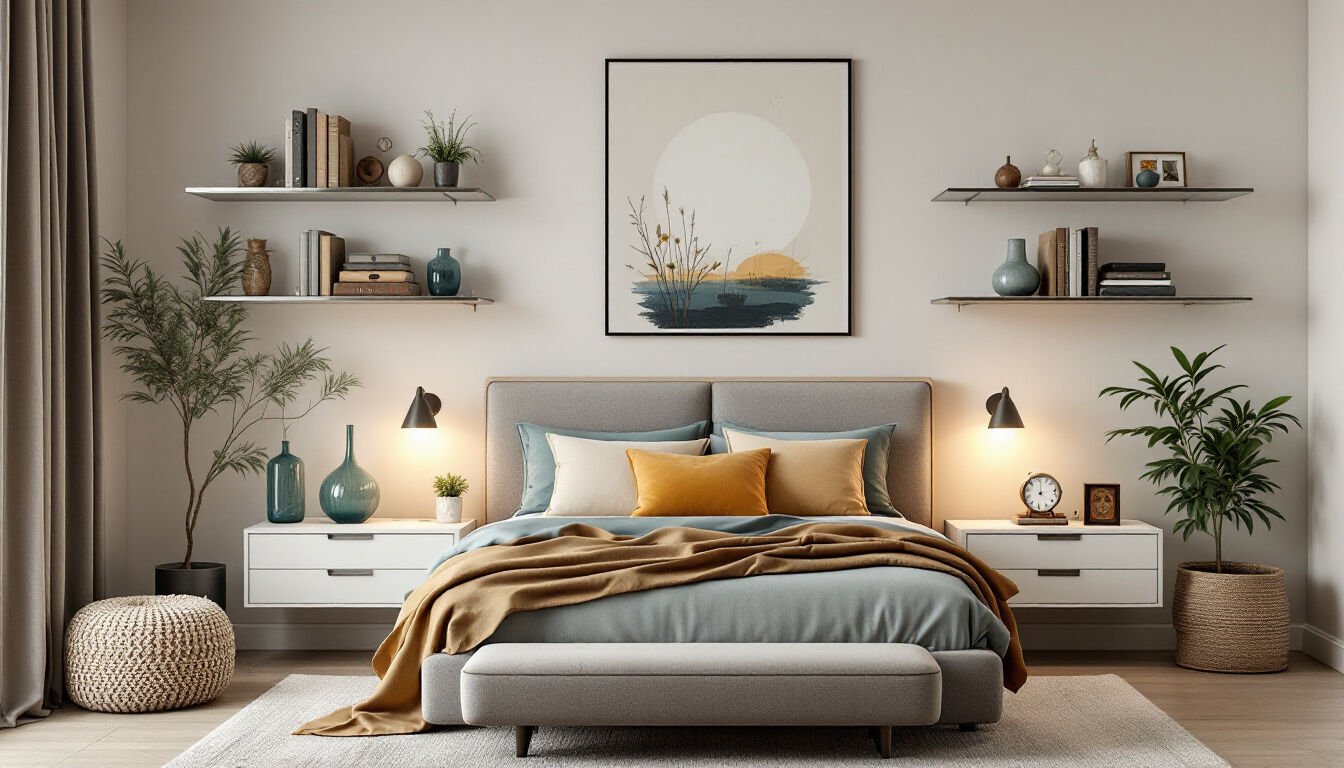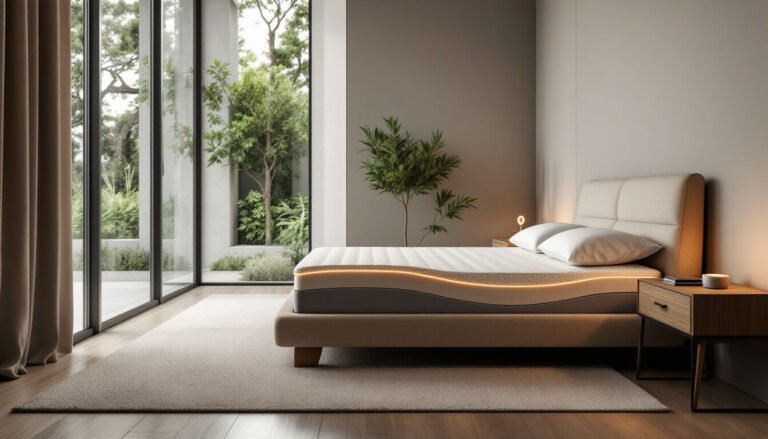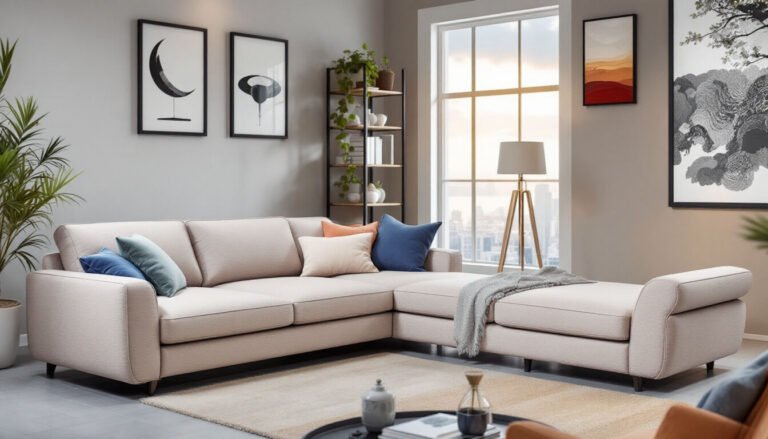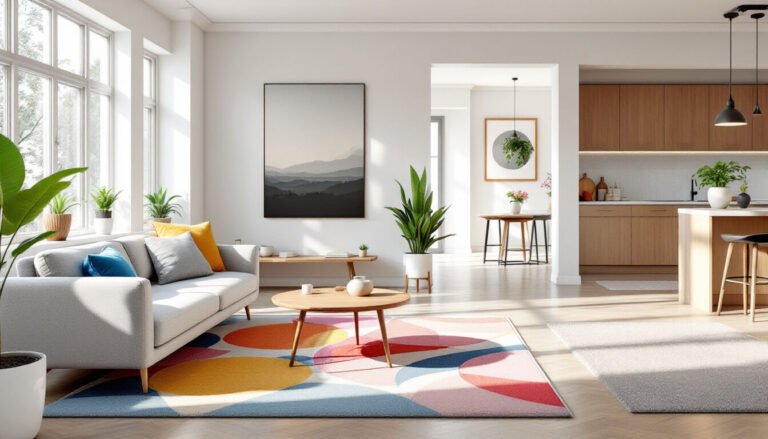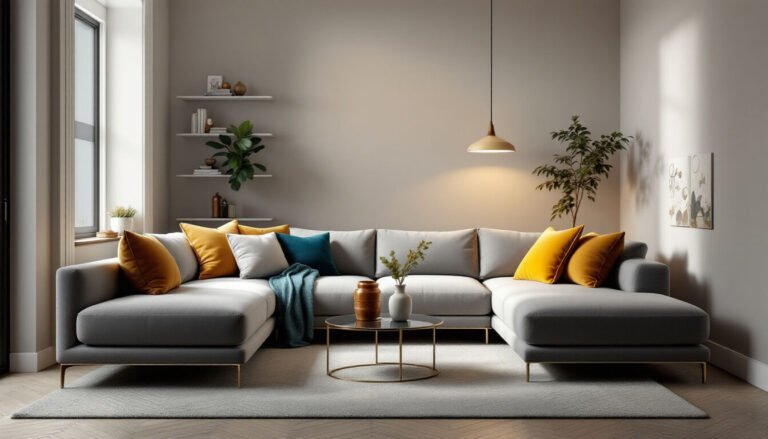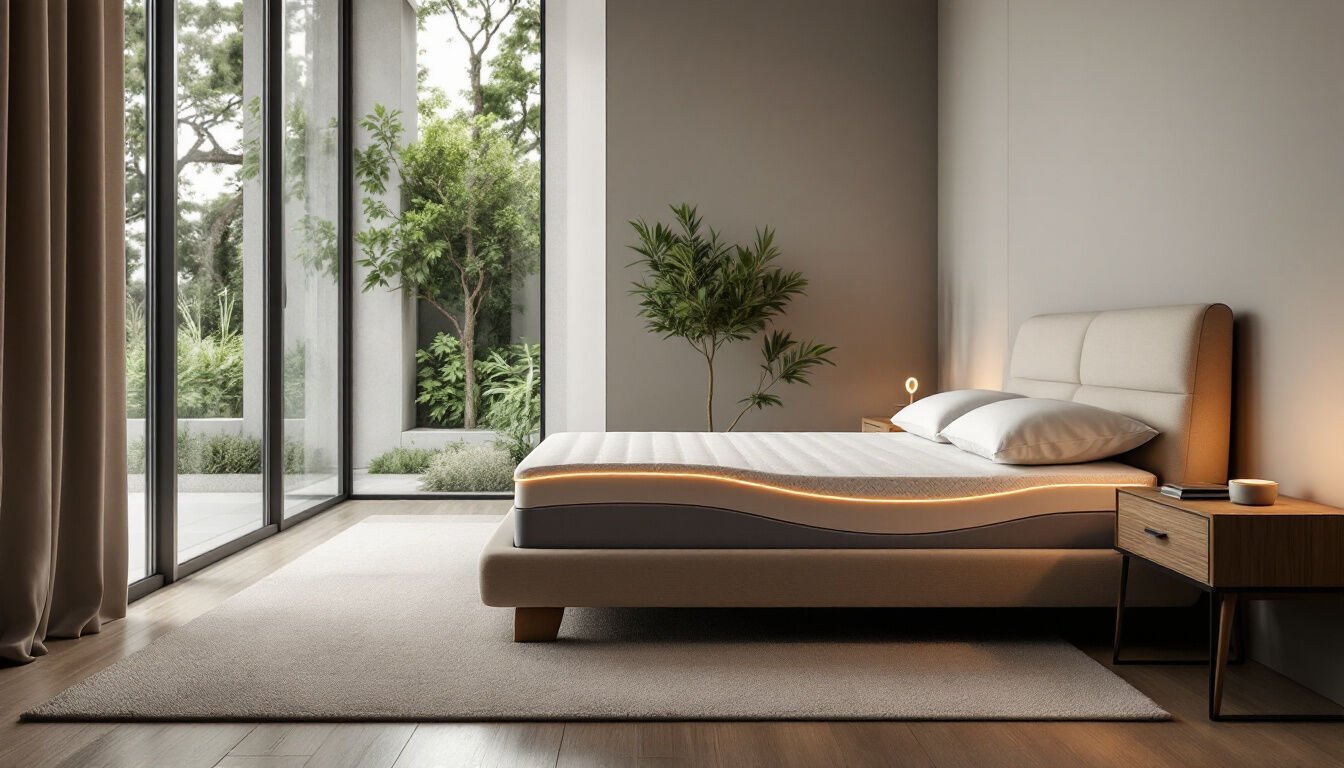Bedroom interior design plays a vital role in how we rest, recharge, and find solace at home. A comfortable yet modern bedroom can make a significant difference in our well-being. The right layout, color schemes, and furniture selection can transform an ordinary bedroom into a cozy retreat.
In this guide, you’ll discover practical strategies for creating a harmonious space that blends contemporary style with personal flair. From efficient storage solutions to statement lighting, we’ll help you craft a dreamy sanctuary. Let’s dive into the essentials that shape a modern, snug, and aesthetically pleasing bedroom.
Keep reading for expert tips, inspiring ideas, and easy steps to make your bedroom truly yours.
1. Understanding Bedroom Interior Design
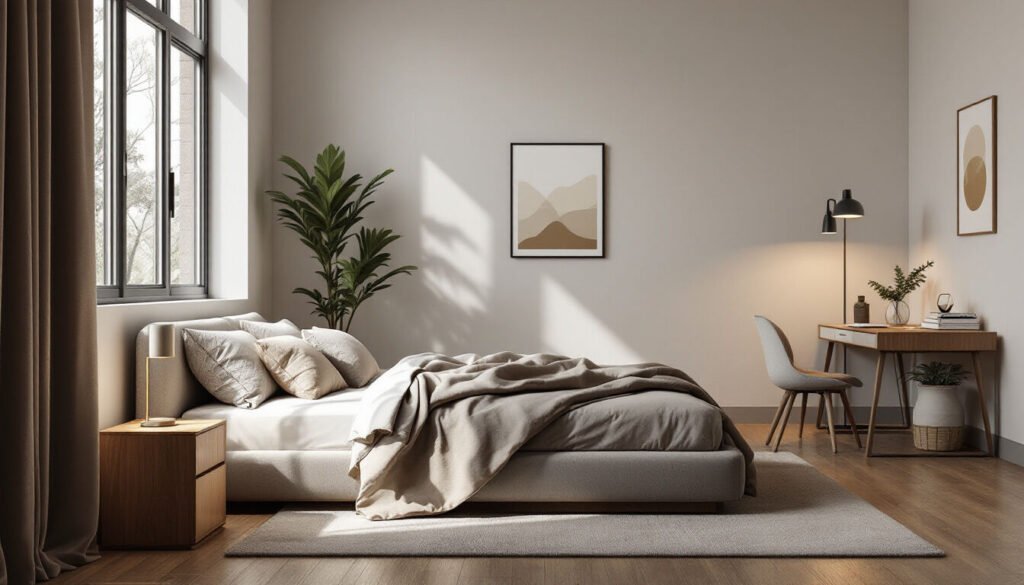
Bedroom interior design influences both the functionality and ambiance of your private space. A well-designed room promotes better sleep, reduces stress, and reflects your personal style. Whether you prefer modern interior design, minimalist room design, or something more luxurious, the fundamental elements remain the same: balance, comfort, and a cohesive aesthetic.
Today’s bedroom styles range from rustic farmhouse to contemporary chic. Trends like Scandi-Japandi or bohemian blends are also popular. According to Architectural Digest , modern bedrooms often revolve around streamlined furniture, neutral color schemes, and uncluttered layouts.
The Role of Functionality
A functional bedroom layout prioritizes daily routines. Your bed should be easily accessible, and walkway clearance helps you move freely. If you work or study in your bedroom, a dedicated zone prevents the space from feeling too cramped. Ergonomic furniture, like adjustable desks or chairs, can enhance comfort. Even something as simple as a well-placed nightstand can make a difference.
Pay attention to how you use your bedroom daily, so each element serves a clear purpose.
Aesthetics and Personal Style
A beautiful bedroom should echo your personality. Whether you love subtle neutrals or bold hues, the color palette sets the mood. Simple design motifs highlight clean lines, while adding textured accents fosters a cozy atmosphere. You can borrow from heritage revival aesthetics, vintage home decor, or classic minimalism to strike a balance.
Trends are helpful for inspiration, but your preferences remain essential. If you’re drawn to vibrant patterns or industrial-chic decor, embrace them in measured doses. Adapting trends to reflect your taste keeps your bedroom fresh yet personal.
Next, let’s discuss how to lay out your bedroom effectively for a modern yet snug feel.
2. Planning a Modern Yet Cozy Bedroom Layout
The right layout ensures ease of movement while creating visual harmony. Start by measuring your room’s dimensions and considering any architectural constraints. A symmetrical arrangement often looks elegant, but angled layouts can work if space is limited. According to Elle Decor , strategic furniture placement also enhances visual appeal.
Smaller bedrooms benefit from compact furniture or built-in solutions, while larger suites can accommodate extra seating or reading nooks. Keep foot traffic free from obstacles, and be mindful of door swings. A well-thought-out plan elevates both function and style.
Zoning Your Bedroom
Zoning divides your bedroom into logical areas for sleeping, dressing, or reading. For instance, place your bed against a central wall away from foot traffic. Near a window, you could create a cozy reading nook with an accent chair. Wardrobes and dressers work best adjacent to dressing zones, saving you from crossing the entire room for outfits.
Room dividers or curtains can also separate a workspace if needed. This technique helps maintain privacy and reduces visual chaos. In large spaces, area rugs or different wall treatments outline distinct sections without needing physical barriers.
Organize your layout by function, so each zone remains purposeful and clutter-free.
Choosing the Right Furniture
Invest in a sturdy bed frame that matches your style, whether that’s modern metal, minimalist wood, or an upholstered headboard. Nightstands should be at a comfortable height, featuring drawers or shelves for essentials. Dressers and wardrobes offer extra storage and can double as decorative statements.
If your space is tight, consider storage beds with built-in drawers or hydraulic lifts. You can also find cost-effective pieces at thrift stores or online marketplaces. Quality doesn’t always mean expensive, but do check for durable materials. Balancing style and practicality ensures your bedroom design remains functional over time.
Next, we’ll explore how color schemes shape your bedroom’s mood and size perception.
3. Color Schemes for a Contemporary Bedroom

Thoughtful color choices define the atmosphere in bedroom interior design. Light or neutral shades reflect more brightness, making small spaces feel larger. Meanwhile, bolder hues create focal points or accent walls. Beyond aesthetics, color also influences our emotional well-being.
If you want a calm vibe, neutrals like beige, gray, or soft white often work best. For a spirited feel, consider teal or muted jewel tones. According to Better Homes & Gardens , layering colors in subtle ways can evoke warmth without cluttering the space.
Neutral Tones and Accent Hues
Neutrals form an adaptable base. You might paint walls in creamy ivory or light gray, then add color via accent pillows or throws. Mustard yellow, teal, or earthy greens offer playful contrast. You can also experiment with a single accent wall in a darker shade.
If you’re cautious about boldness, start small. An accent color introduced through curtains, lamp shades, or artwork is easily changed if you tire of it. Balancing quiet neutrals with striking hues keeps the bedroom looking effortlessly polished.
Color should reflect your personality while supporting the room’s function and comfort.
Playing with Textures
Texture adds depth and visual interest. Plush velvet pillows, a chunky knit blanket, or a woven rug can all bring a snug feel. Avoid going overboard; you don’t want to overwhelm a small room with numerous competing materials.
Combining smooth and rough surfaces keeps the look dynamic. For instance, pair sleek wooden nightstands with a faux fur throw or linen drapes. Such variations enhance a modern design’s charm while maintaining an inviting aura.
Next, let’s illuminate your cozy bedroom with smart lighting choices.
4. Lighting Design for a Cozy and Modern Ambiance
Proper lighting elevates bedroom interior design. Ambient lighting sets the overall brightness, while task lights focus on reading or dressing. Accent lighting highlights decorative elements. The right combination of these layers crafts a comfortable and functional environment.
Energy-efficient LED bulbs or smart lighting systems can reduce costs and allow versatile control. You might dim the lights for nighttime relaxation or brighten them on busy mornings. For more technical lighting tips, Lumens provides an excellent breakdown.
Ceiling Fixtures and Pendants
A statement chandelier or modern pendant can be a focal point. Position it over the bed or near a central area so light disperses uniformly. Recessed lighting also works, especially in low-ceiling rooms. Install dimmers for adjustable brightness, transitioning easily from day to night.
If you prefer subtle designs, flush-mount fixtures blend well with minimalist styles. For a bolder look, geometric pendants or large globe lights add drama. Both aesthetics pair seamlessly with modern bedroom decor.
Ceiling lighting sets the stage, but bedside and task lights complete the puzzle.
Bedside and Task Lighting
Consider table lamps, wall sconces, or flexible reading lights near your bed. You’ll appreciate them for late-night reading or a warm glow before sleep. Matching fixtures create symmetry, but mixing shapes or materials can also work if color schemes stay coherent.
Align your lighting choices with the bedroom’s overall theme. If you have a scandi-japandi style, choose understated wood or fabric shades. Industrial or contemporary spaces might embrace metal sconces with exposed bulbs.
Soft, targeted lighting can elevate both comfort and style in your sleep sanctuary.
5. Furnishings and Decor Accents for Modern Comfort

Modern bedrooms celebrate simplicity and refined details. Furniture should be sleek yet cozy. Look for bed frames with clean lines or polished wood finishes. Side tables can double as storage, while a quality dresser organizes clothes without adding bulk.
Textiles matter too. Choose breathable bedding, like cotton or bamboo, for daily comfort. A plush duvet or weighted blanket gives a luxurious touch. According to Martha Stewart Living , mixing textures (sateen sheets, linen throws) can enhance warmth and depth.
Statement Headboards
A striking headboard often serves as the bedroom’s focal point. Upholstered designs exude softness and come in colors that can accent your palette. Wood-carved or minimalist metal headboards lean toward either rustic or modern vibes.
Coordinate the headboard texture or color with curtains or other textiles for cohesion. Mounting and care differ by material—fabric might need regular vacuuming, while wood benefits from occasional polishing.
Choose a headboard that complements your style and stands the test of time.
Layering Bedding for Cozy Appeal
Layers make your bed inviting. Begin with quality sheets, add a duvet or quilt, then top off with decorative pillows or a throw. This approach creates visual interest and adjusts easily to temperature changes.
Stick to a neutral base—white or gray sheets—and incorporate accent colors in smaller items. This strategy simplifies style updates since swapping throws or cushions can refresh the room without a total redesign.
Next, let’s add nature’s calming influence with greenery and natural elements.
6. Incorporating Greenery and Natural Elements
Plants elevate the atmosphere, improving air quality and bringing a biophilic touch. They connect you to the outdoors, which can boost relaxation. If you’re new to indoor gardening, opt for low-maintenance houseplants like snake plants or pothos.
Biophilic design emphasizes natural light, organic textures, and earthy color palettes. According to The Spruce , integrating elements like stone or wood also complements greenery. Even small touches—a stone planter or jute rug—add serenity to your bedroom.
Choosing the Right Plants
Consider species that thrive in low light, like pothos or zz plants. Place them where they can catch occasional sunlight but remain out of direct drafts. Taller plants like fiddle leaf figs require more care but make a bold statement.
Decorative planters extend your design theme. Modern spaces benefit from sleek metal stands, while boho or rustic aesthetics favor woven baskets. Remember to water moderately and rotate plants so they grow evenly.
Pairing plants with natural materials fosters a soothing, organic vibe.
Natural Materials and Textures
Wood, stone, jute, and bamboo infuse warmth. Incorporate wood in bed frames or accent walls, or choose a stone-topped nightstand for contrast. Eco-friendly materials often last longer and reduce your environmental footprint.
A jute rug or bamboo blinds can subtly connect you to nature. Soft lighting bouncing off these elements creates a tranquil environment that aligns with sustainable interior design principles.
With natural touches in place, let’s shift to storage solutions that keep your room tidy.
7. Storage Solutions and Organization Tips

A cluttered room undermines even the best design. Thoughtful storage not only preserves aesthetics but also promotes mental well-being. Hidden compartments or multi-functional furniture can be game-changers in smaller spaces.
Use closet organizers, shelving systems, or vertical racks to store items neatly. Maintaining order will help you relax and enjoy your bedroom more. For more organization ideas, Real Simple features innovative hacks.
Under-Bed Storage Ideas
Maximize the space below your bed. Rolling bins, drawers, or hydraulic bed frames keep seasonal clothes or extra linens out of sight. This method also suits small bedrooms where closet space is limited.
Label bins or sort items by category for quick access. Vacuum bags help condense bulky winterwear. Maintaining a system ensures your stash remains neat rather than turning into a hidden clutter zone.
Efficient under-bed storage leaves more floor area free, enhancing visual spaciousness.
Smart Wardrobe Planning
A tidy wardrobe makes daily dressing easier. Organize clothes by color, season, or style. Shelving units and specialized hangers optimize space. Discard or donate items you rarely use to prevent buildup.
If you have room, a walk-in wardrobe can incorporate mirrors or built-in lights. In compact setups, consider closet organizers or overhead shelves. Keep shoes in stackable boxes or hanging racks to maintain that streamlined look.
Next, we’ll dive into specific small bedroom design hacks.
8. Small Bedroom Design Hacks
Compact bedrooms need careful planning to avoid feeling cramped. Use furniture that can fold away or serve multiple purposes. Mirrors and bright colors make tight spaces seem more open.
Instead of large wardrobes, you might use built-in shelving or a single clothing rack. Keep the bed sleek and consider floating nightstands. For more inspiration, check out our small space design tips here .
Multifunctional Furniture
Daybeds can transform a sleeping zone into a lounge during daylight hours. Foldable desks or hidden vanity tables adapt to your evolving lifestyle. An ottoman with storage adds seating while stashing extra blankets.
If your bedroom doubles as a workspace, choose convertible pieces to transition smoothly. Clear surfaces encourage a tidy feel, essential in cozy minimalist bedroom setups.
Less is more when dealing with minimal square footage, so pick items that pull double duty.
Utilizing Light and Reflection
Mirrors amplify natural or artificial light, giving an illusion of depth. Position them across windows to bounce sunlight around. Sheer curtains allow maximum daylight without sacrificing privacy.
Opt for reflective finishes on dressers or decorative objects. Light, neutral walls and strategic lighting can make a small bedroom look more expansive. The synergy between clarity and brightness elevates the entire space.
Up next, we’ll explore how to add unique touches for personalized style.
9. Personalizing Your Bedroom Design

A modern bedroom doesn’t have to feel generic. Personal mementos and creative decor elements showcase your story. Display photos, artwork, or souvenirs that spark joy. Balance them with the room’s overall theme for a cohesive look.
If your preference leans toward cultural decor fusion or vintage accessories, carefully curate focal points. Keep some wall space clean to avoid a cluttered effect. A sense of harmony between personal items and general design principles results in a polished yet intimate environment.
Unique Decor Elements
Gallery walls, sculptures, or handcrafted pieces add character. You could hang a woven tapestry for texture or incorporate macramé planters to nod to bohemian influences. Artisanal craftsmanship also lends uniqueness, whether it’s a pottery lamp or a ceramic vase.
Think about scale. A large painting can anchor a minimalist bedroom, while a series of small prints suits a narrow wall. Don’t be afraid to mix modern lines with rustic or vintage finds—just be mindful of balance.
Bring your personality into each detail, but keep synergy across the space.
Rugs and Floor Coverings
Rugs offer warmth and visual interest. Large rugs that extend beyond the bed’s sides can make the room appear bigger. Patterned or layered rugs also add cozy flair.
Consider foot traffic. High-pile rugs are plush but might be tough to maintain. Low-pile or woven designs balance comfort with practicality. Match or contrast colors thoughtfully so they fit your chosen palette.
Now that we’ve covered personalization, let’s see what’s trending in bedroom interior design today.
10. Latest Trends in Bedroom Interior Design
Modern trends often fuse simplicity with technology. Styles like Scandi-Japandi merge Japanese minimalism with Scandinavian warmth, focusing on natural materials and soft tones. Boho luxe introduces plush accents, while industrial chic embraces raw textures.
Sustainability remains a major theme. Many designers opt for reclaimed wood, organic linens, and eco-friendly paint to reduce environmental impact. According to the global interior design market, consumers increasingly prioritize ethical sourcing and low-VOC materials.
Sustainable and Biophilic Themes
Going green is more than adding a few plants. Incorporate repurposed furniture, choose biodegradable or recycled materials, and let natural light flow. Calming nature-inspired palettes like sage greens or terracotta reinforce biophilic ideals.
Window treatments that maximize daylight not only cut energy costs but also highlight nature’s role. Such synergy fosters an airy, organic ambiance, reflecting sustainable interior design at its best.
Eco-conscious choices can remain stylish if done thoughtfully.
Tech-Forward Spaces
Bedroom interiors also evolve with technology. Consider voice-assisted devices for controlling lights or blinds. Smart thermostats regulate temperature, supporting restful sleep. For deeper tech integration, Forbes Home highlights upcoming innovations.
However, balance is key. Too many gadgets might disrupt a calming vibe. Integrate wireless chargers or concealed wiring to maintain a clean, modern look without tech clutter.
If you’re on a budget, we’ll explore thrifty approaches next.
11. Budget-Friendly Tips and DIY Ideas

A stylish bedroom makeover needn’t cost a fortune. Repurpose older furniture with fresh paint or new upholstery. Check secondhand shops, estate sales, or online listings for hidden gems. Sometimes, vintage home decor merges beautifully with modern pieces, creating a unique vibe.
Simple do-it-yourself projects also infuse personality. Paint geometric shapes on one wall or craft your own headboard from reclaimed wood. This approach saves money and ensures your design remains distinctive.
Thrifting and Bargain Hunting
Local thrift stores often carry affordable pieces that just need a little TLC. Look for sturdy frames, minimal wear, and classic shapes. A fresh coat of paint or updated hardware can revitalize a nightstand or dresser.
Online platforms can also help you snag deals. Verify the item’s condition and plan for potential refurbishment. Reusing and revitalizing items is eco-friendly and budget-savvy.
Customization transforms thrifted finds into a cohesive, modern look.
Easy DIY Decor Projects
A handmade headboard can be as simple as mounting upholstered panels or reclaimed wooden planks. Stencils or decals add flair to an accent wall. You might also paint old frames in bold colors, filling them with personal photos or prints.
Macramé wall hangings or crocheted blankets bring cozy texture. Pinterest is full of step-by-step tutorials for all skill levels. The key is to keep it consistent with your bedroom’s overall design theme.
Next, we’ll highlight common mistakes people make in bedroom design.
12. Common Mistakes to Avoid in Bedroom Interior Design
Many overlook proper spacing or fail to unify color palettes, leading to visual clutter. Others cram in too much furniture, reducing comfort and blocking natural flow. Awareness of these pitfalls helps you sidestep them and maintain a polished result.
Another frequent error is neglecting lighting. A single overhead lamp rarely suffices. Layered lighting—ceiling, bedside, accent—ensures function and ambiance. Also, mixing too many bold colors can overwhelm and disturb relaxation.
Neglecting Proper Space Planning
Without accurate measurements or a floor plan, you risk buying items that don’t fit. This can lead to cramped walkways or forced rearrangements. Plan furniture size and placement before purchasing.
Leave at least 24 inches of clearance around the bed for comfortable movement. Avoid blocking windows or closet doors. Think about your daily routine to keep essential zones accessible.
Smart planning prevents regrets and fosters an effortlessly functional environment.
Clashing Color Palettes
Overly contrasting hues can feel chaotic. Stick to a primary color family and add one or two complementary shades. If you love bright colors, use them as accents rather than painting every wall in neon.
Test paint swatches in different lighting conditions. Daytime might highlight undertones invisible at night. Ensuring harmony keeps your bedroom from looking disjointed.
Now, let’s wrap up with a final summary and actionable steps.
Conclusion

Creating a modern yet cozy bedroom requires thoughtful layout planning, balanced color schemes, functional storage, and personalized accents. By focusing on ergonomics, layering textiles, and embracing sustainable design, you can build a space that feels luxurious and inviting.
Remember to keep clutter at bay, integrate meaningful touches, and select lighting that suits each zone. A well-designed bedroom not only promotes restful sleep but also serves as a reflection of your style.
Ready to take the next step? Learn how to create a mood board to refine your bedroom design ideas. Or, if you’re intrigued by cutting-edge options, discover ways to integrate smart tech here .
Frequently Asked Questions
Select a base palette that complements your style. Neutral walls allow freedom with accent pieces, while bold shades can appear in textiles or accent walls. Test paint samples in various lighting to see how colors shift.
A compact bed frame with built-in storage can be invaluable. Also consider multipurpose nightstands or a wall-mounted desk. Ensure pieces don’t overwhelm the limited space.
Use sleek lines and simple silhouettes for the base pieces, then add plush throws or textured rugs. Combine neutral colors with pops of warm accents. Balance ensures neither element dominates.
Layered lighting is key. Overhead fixtures like pendants or chandeliers provide ambient light, while bedside lamps or wall sconces offer task lighting. Dimmers and smart bulbs allow tailored brightness.
Yes, but maintain a cohesive color palette or repeating elements. Combining modern pieces with vintage decor can look stunning if unified by color or material themes.

